The members of the Ericaceae family are grouped together based on similar reproductive structures, appearance, and preferred growing conditions. Many of these plants are found in well-drained soils in the dark cover of a canopy or in the high elevations of the mountains.
Some that we have featured are truly special in that they are saprophytes. This means that the plant lives on dead, organic decaying matter. Because of this, saprophytes don’t need green leaves as they don’t conduct photosynthesis.
Check out some of the awesome heath plants found in this region!
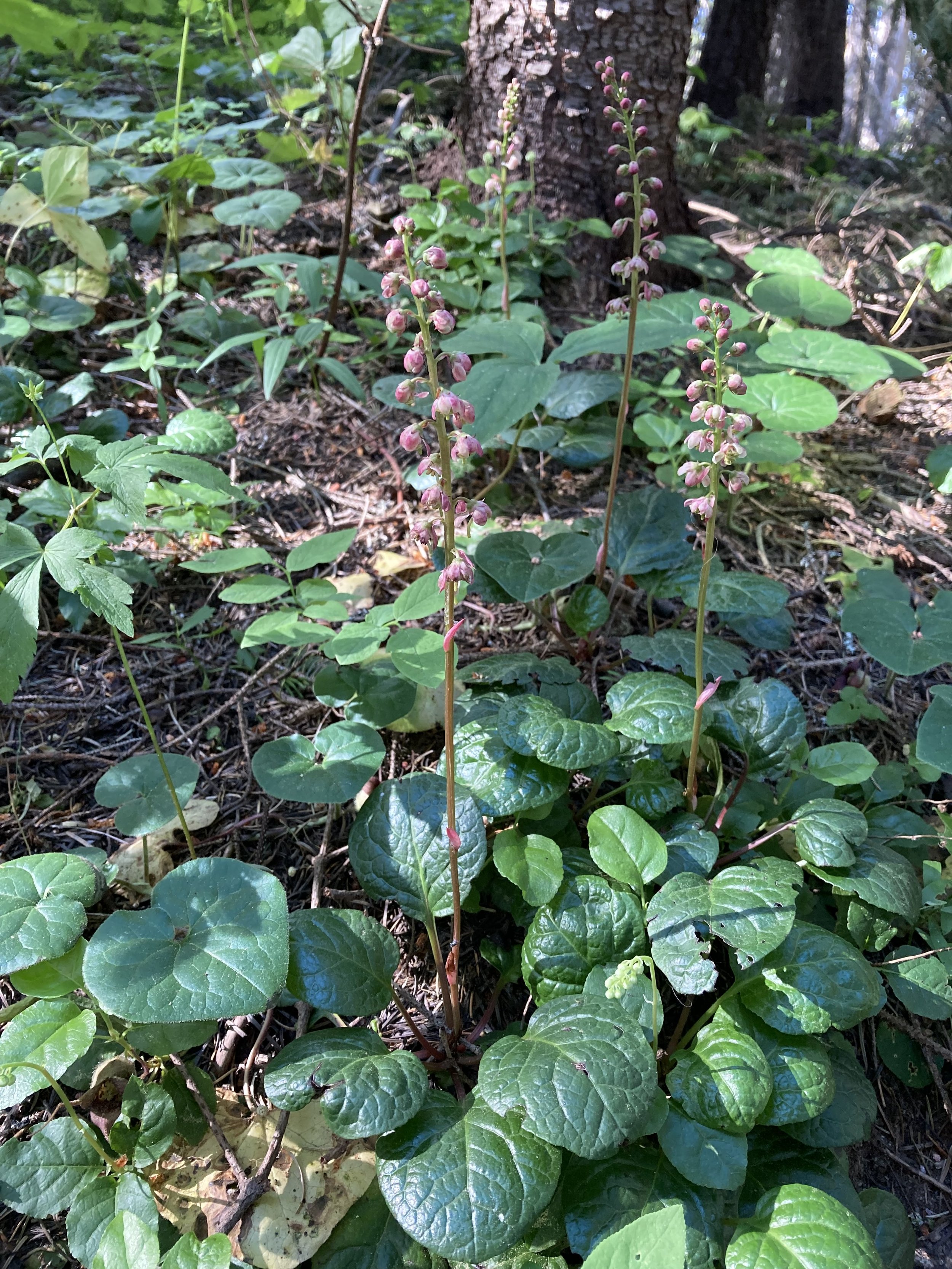
Can also be known as wintergreen. Flowers sprout from a long, bare stem. Drooping and waxy, flowers have five white-pink petals with long protruding stamens. Blossom from the bottom up. Leaves are leathery and round, being dark green. Only two at the base of each plant. Found in wet soil, around streams, and in dense forests.
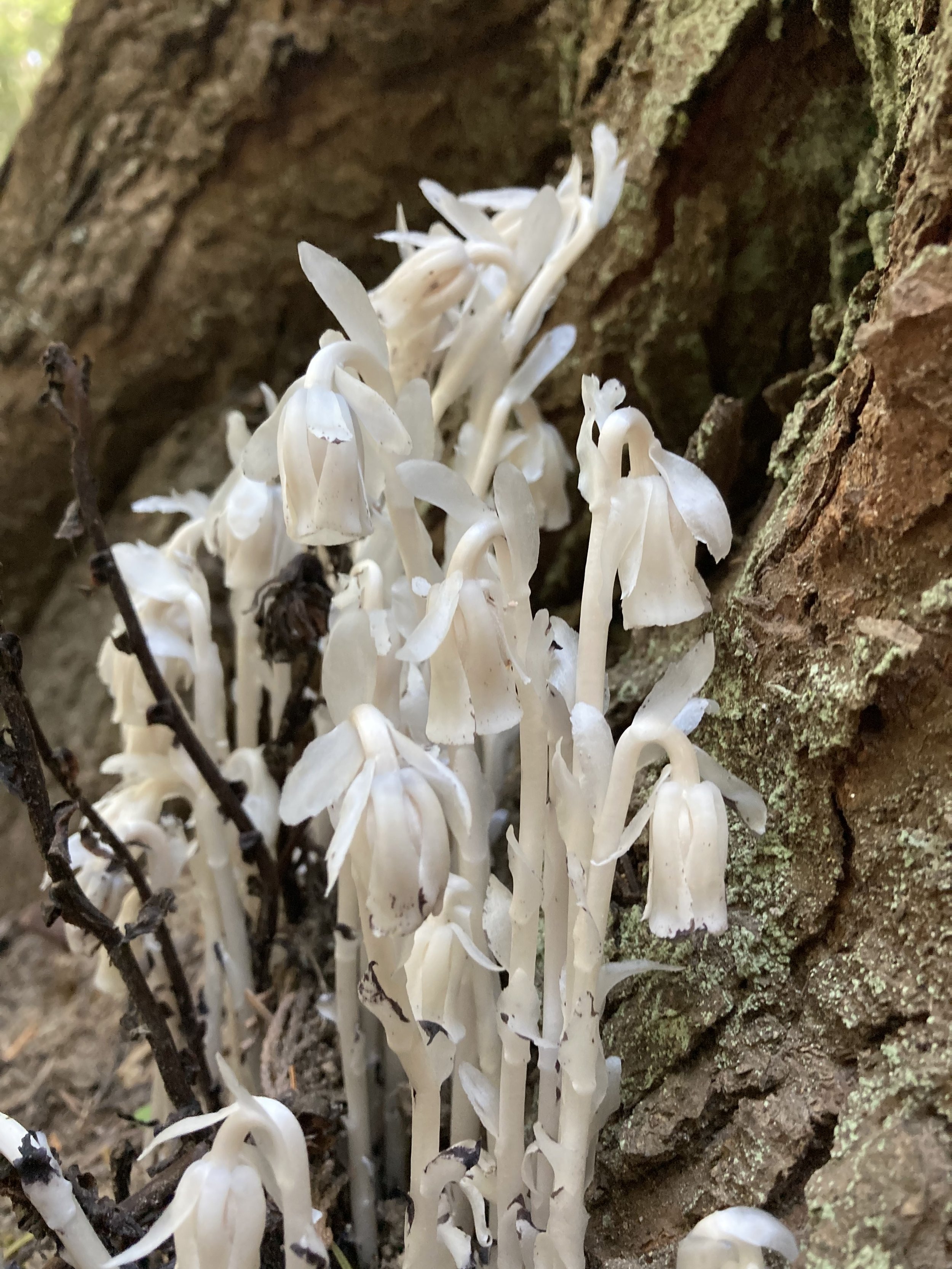
A very strange and eerie-looking plant with a single waxy (almost translucent) stem that grows in groups. Stems are about one foot tall and droop at the top with a single flower. Flower typically comes in after a rain. Found in wet forest with thick cover. Turns black when dry at the end of season.

Also known as Prince’s Pine. A short but rising stem is topped with several, nodding, small white flowers. Each has five round petals with a large green center. Before they bloom, flowers are curled in tight balls. Leaves are leathery, waxy, and sharply toothed coming to a point at the end. Found in moist, dense forests.
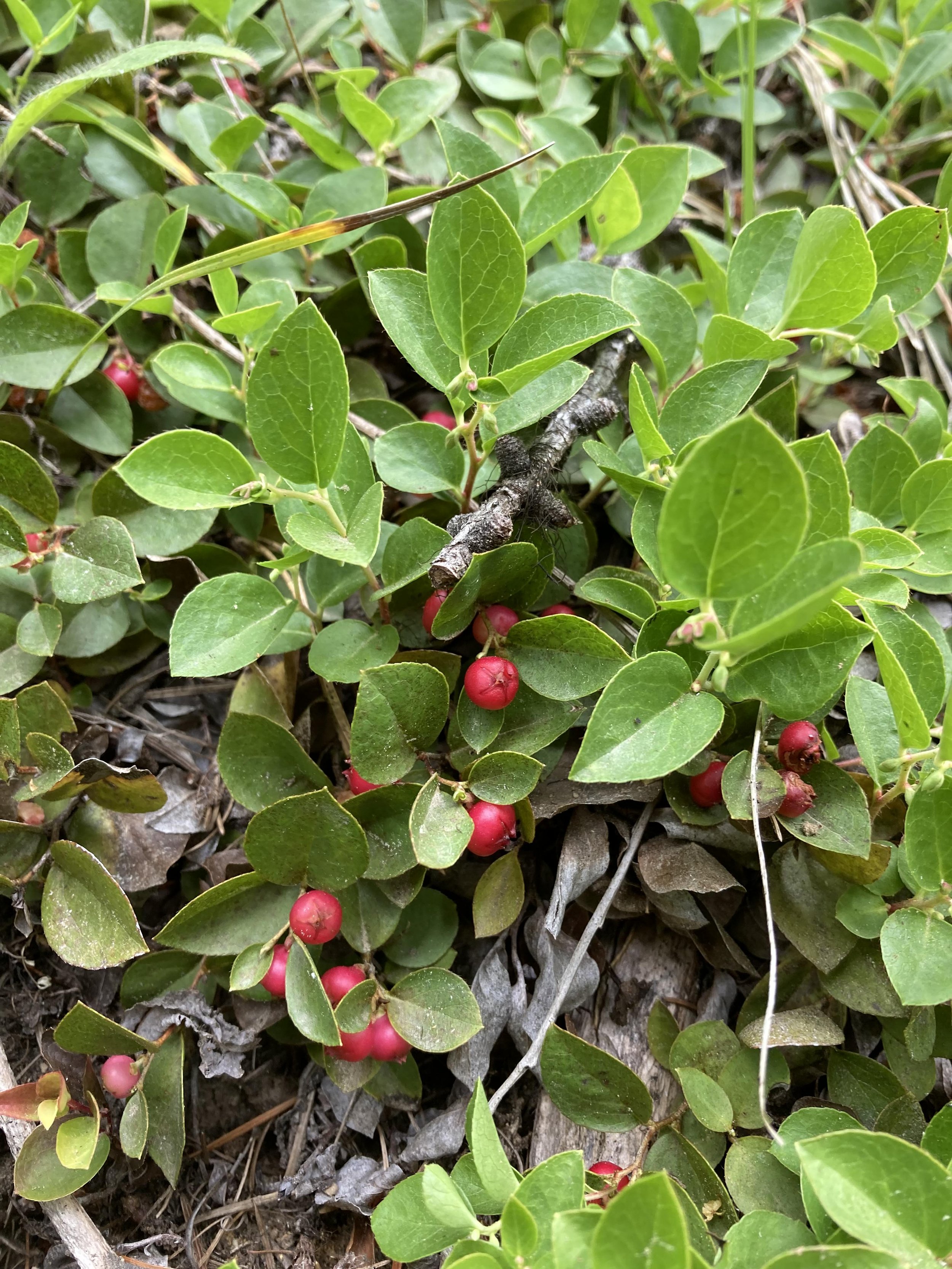
A very short low-growing, creeping plant. Has rounded, glossy leaves, about ¼ in. Most visible with fruits which are small, round, red berries. Flowers grow singly on a stem. Is ground covering and often seen on the backslope of trails. Leaves and berries are edible and taste like wintergreen.

Is also called mountain heath. Can be mistaken for a small, mat-spreading evergreen tree due to its needle-like leaves. Grows in a mat in high meadows and dry side slopes. Flowers are small and pink and bell-shaped. They grow in clusters at the tips of the branches. There are other species with different colored blooms.
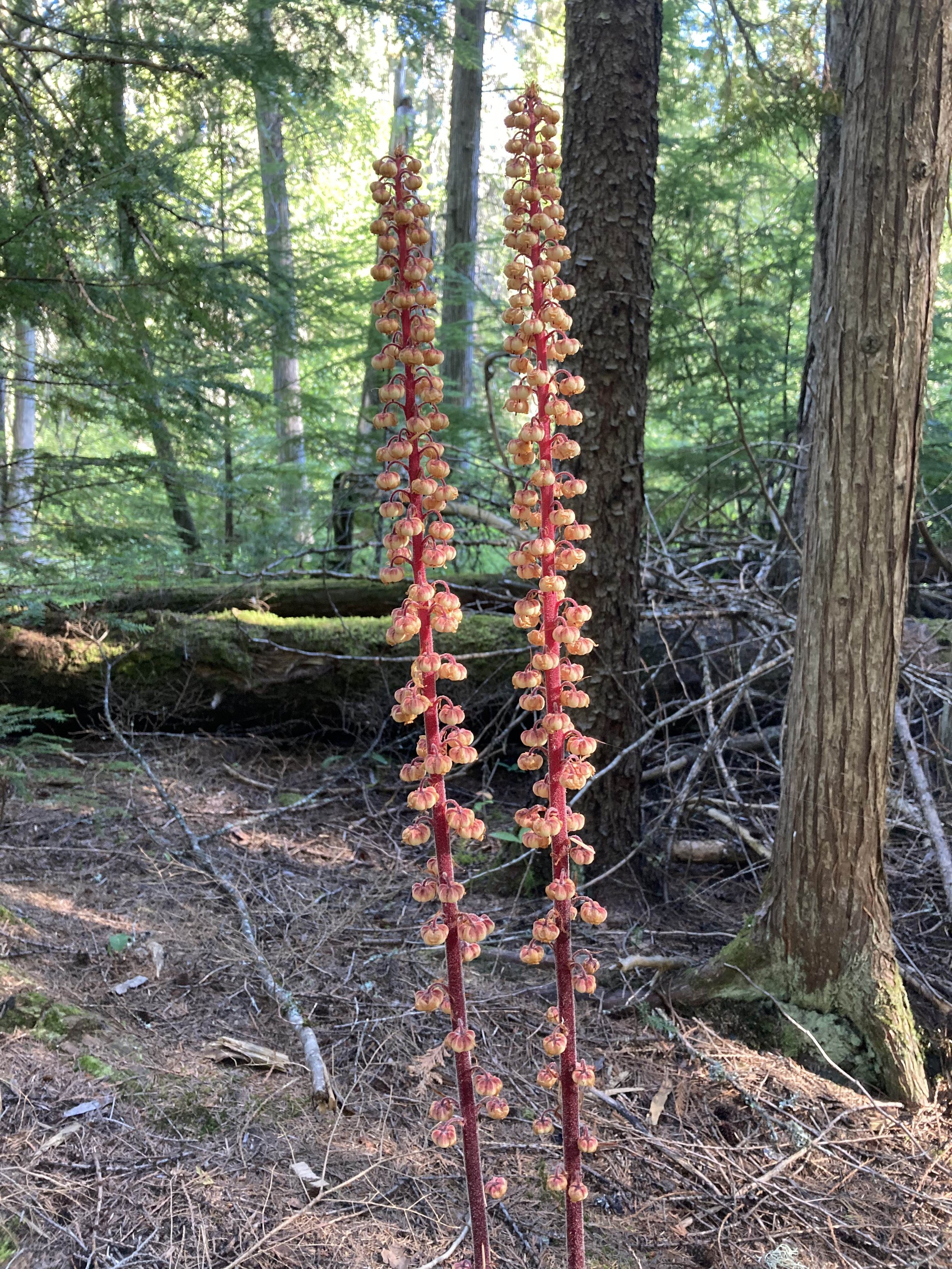
An absolutely beautiful, eye-catching saprophyte (lives on dead organic matter) can grow tall, up to three feet. Towering over most other undergrowth. The stem is a dark red with silvery hairs. Flowers are incredible and small, as the little globe-shaped bells droop and line the plant all the way up. The white of the flowers with the red stalk truly sets them apart. Found in lower elevation, dense woods. Usually occur individually or in small groups.

A surreal-looking plant that brings Christmas-like feelings. ½ - 1½ft tall, this white saprophyte with vertical red stripes really stands out in the understory. The dark red flowers line the stalk which are undertaken with white leave-like structures. Usually sprouts after a heavy rain. Flowers darken after prime bloom and entire plant becomes less vibrant. Found in dense forests.
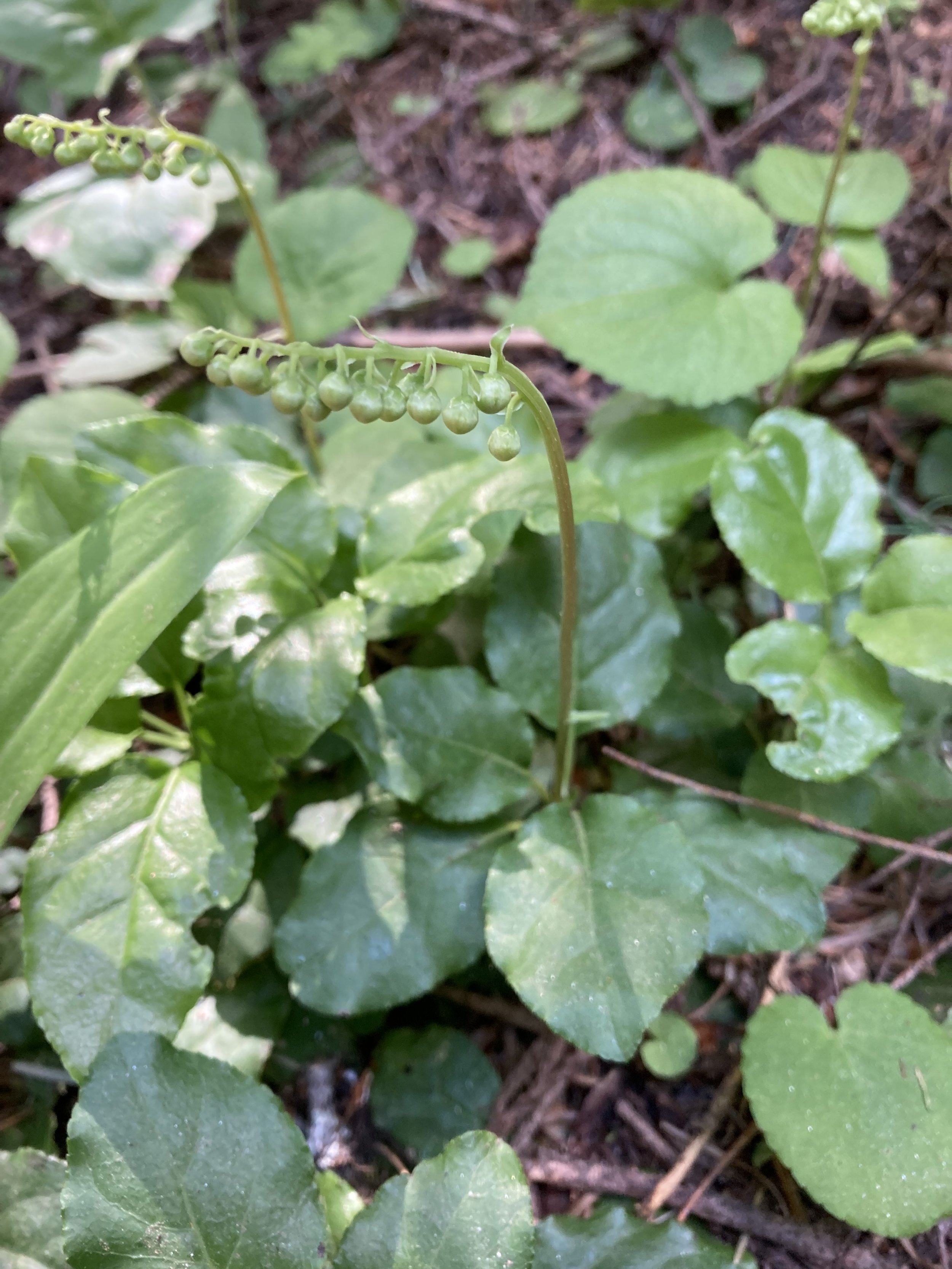
Typically found in groups, low to the forest floor. A pastel-green, nonvibrant line of flowers goes up a single side of the short flowering stalk (hence the name). These are typically bent to one side due to uneven weight distribution. Flowers are small, green bells with a protruding style. Leaves are dark green and oval and grow from the base of the 3 in flowering stem. Found in dense forests.









